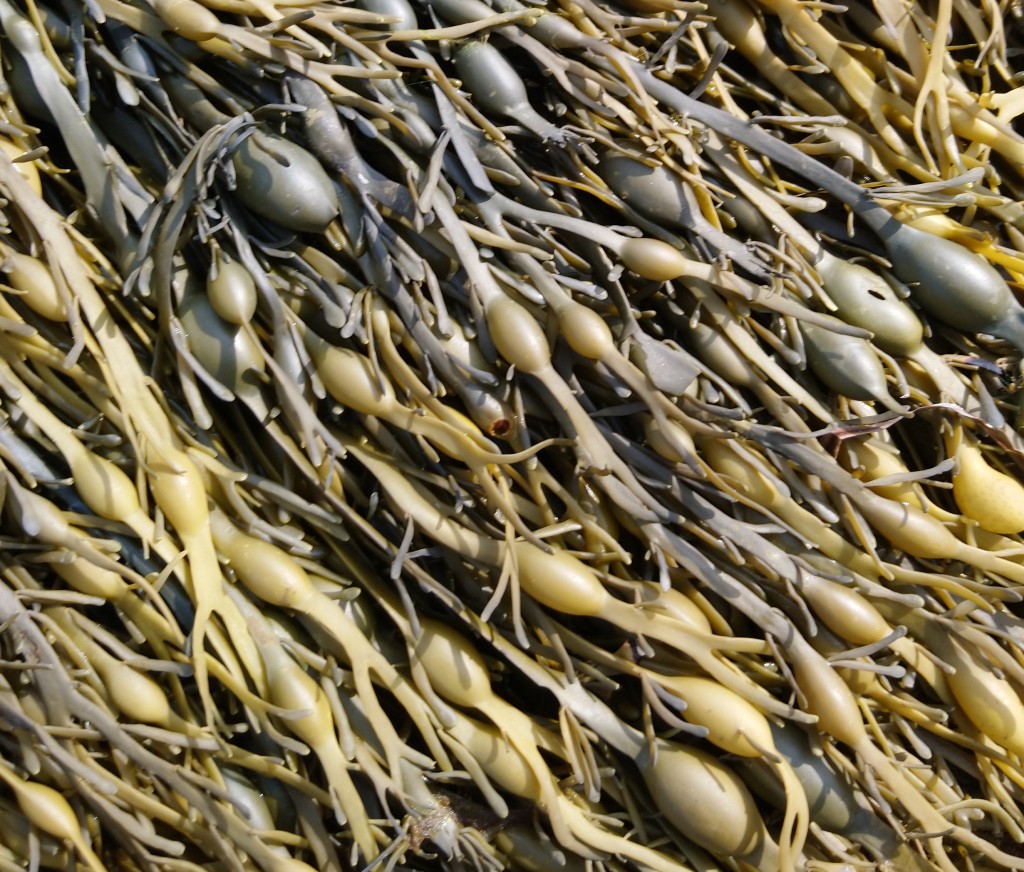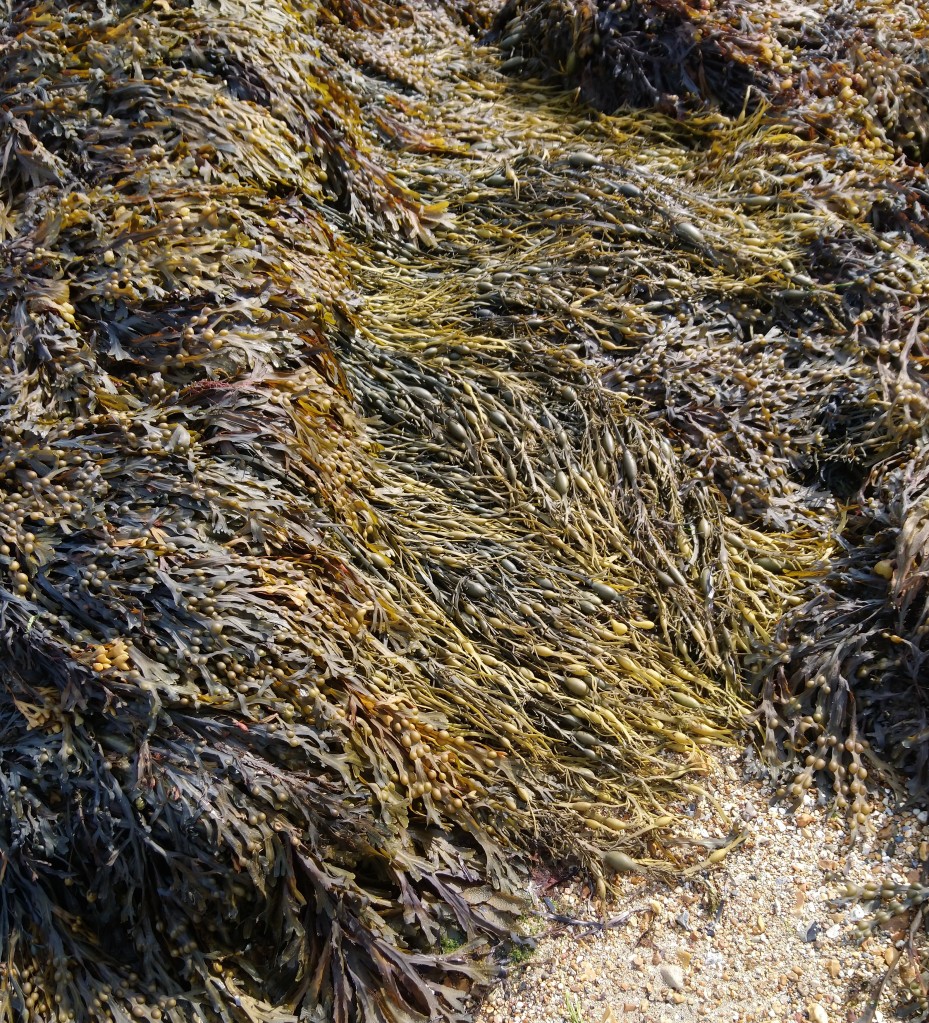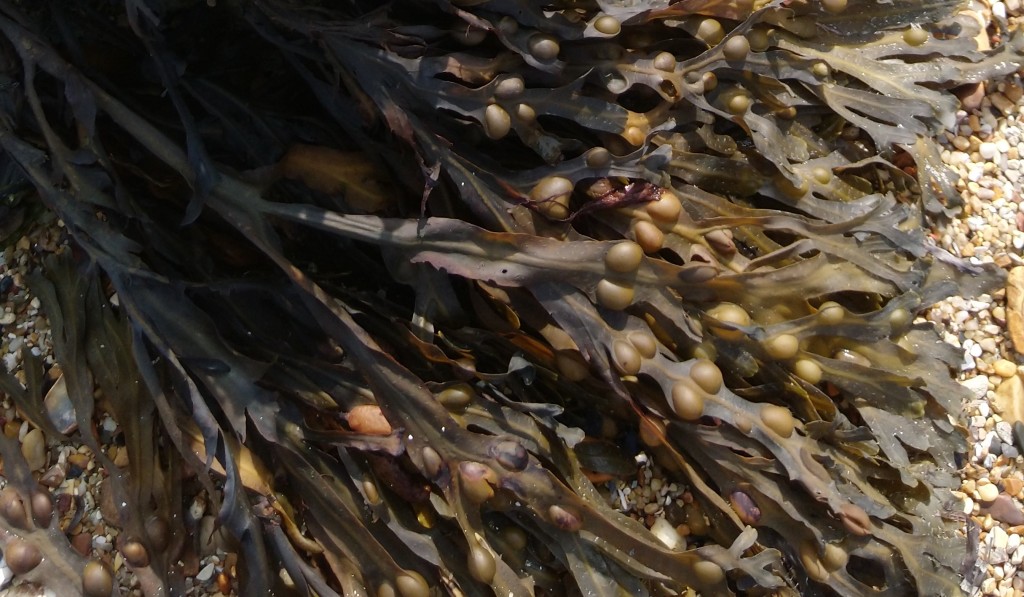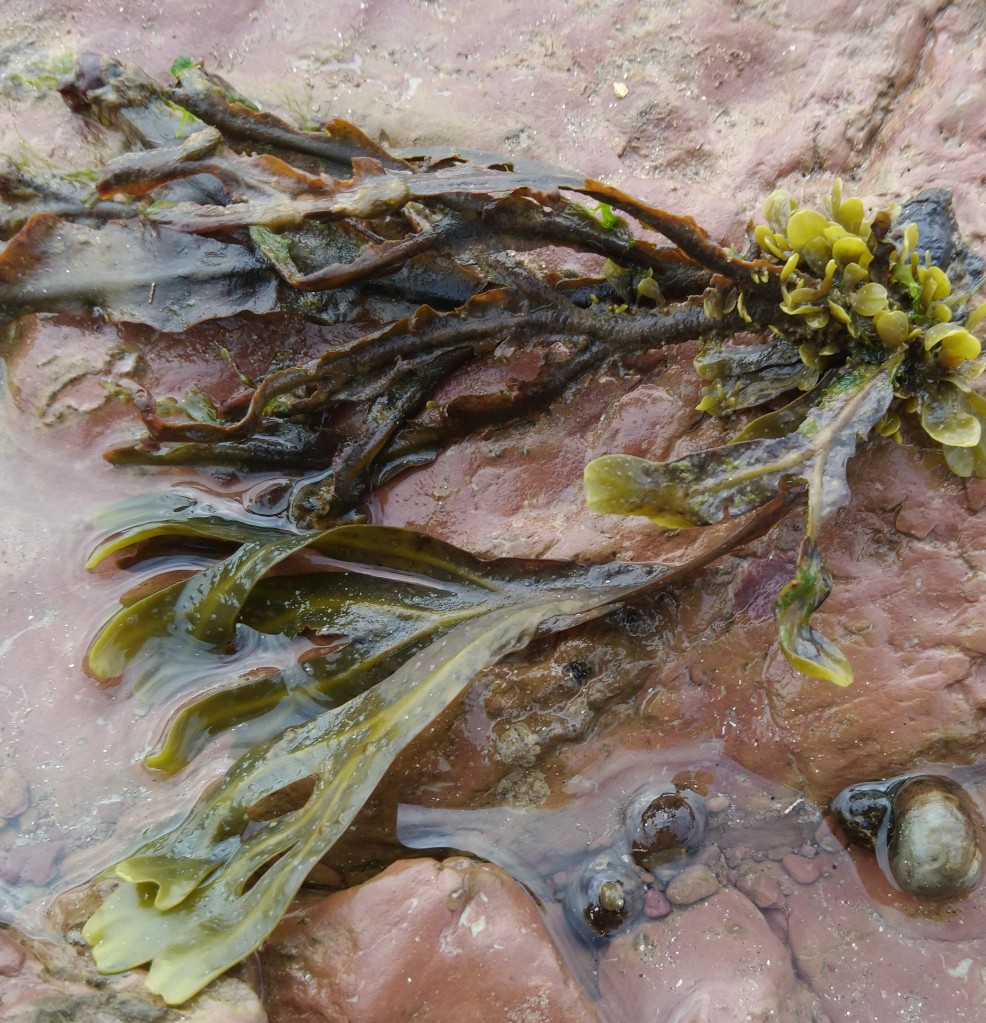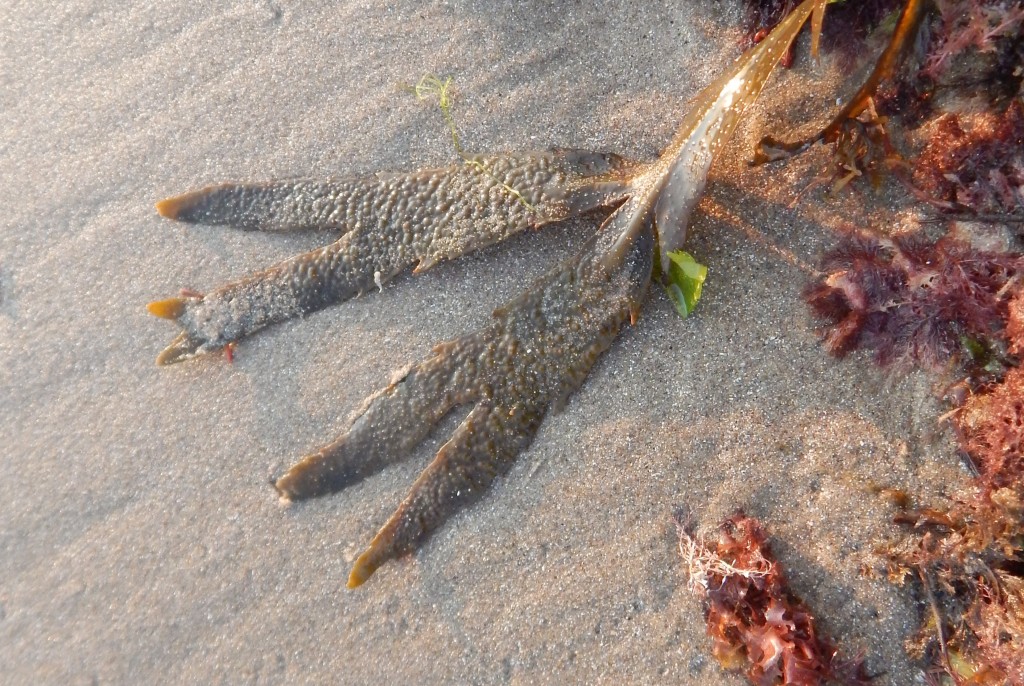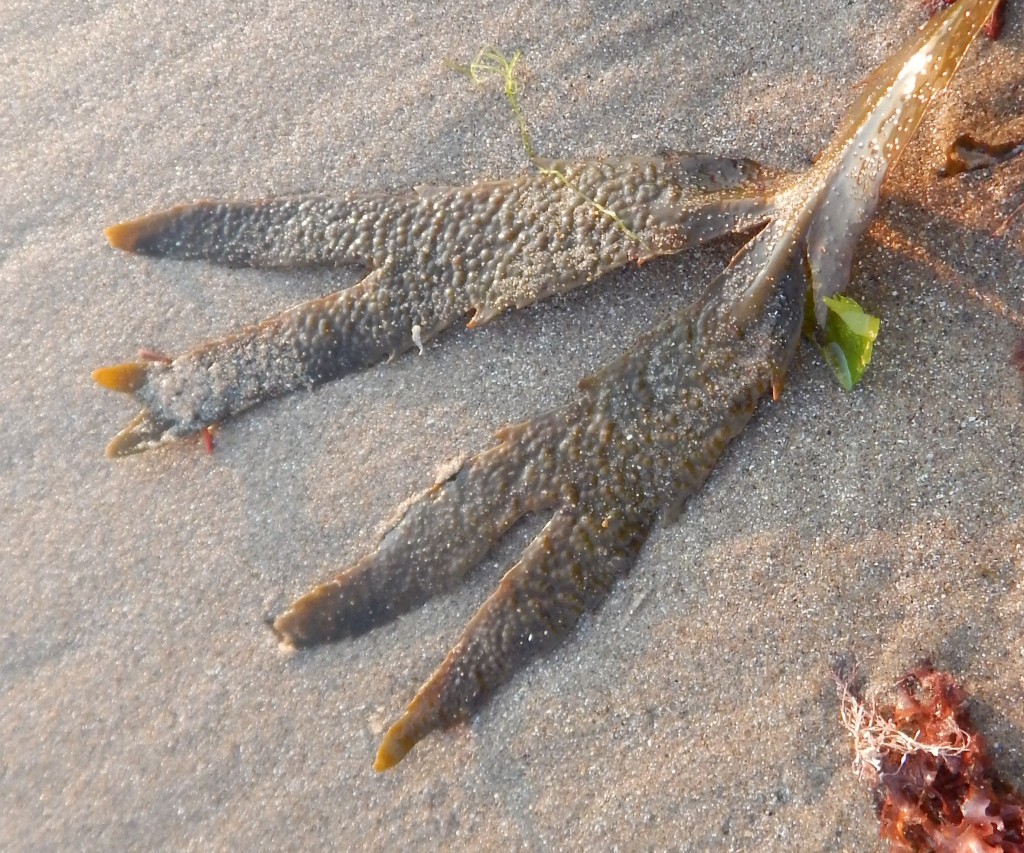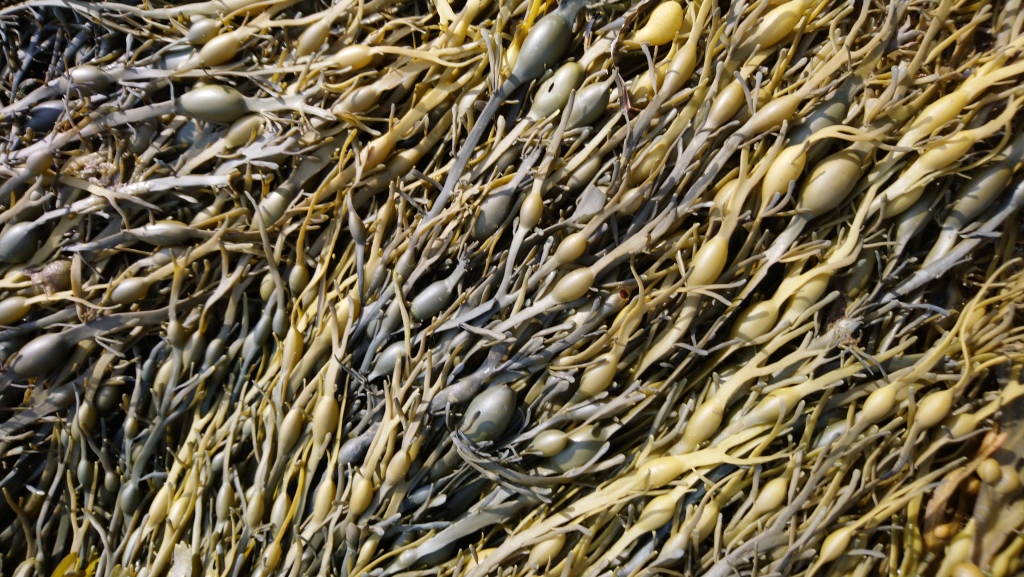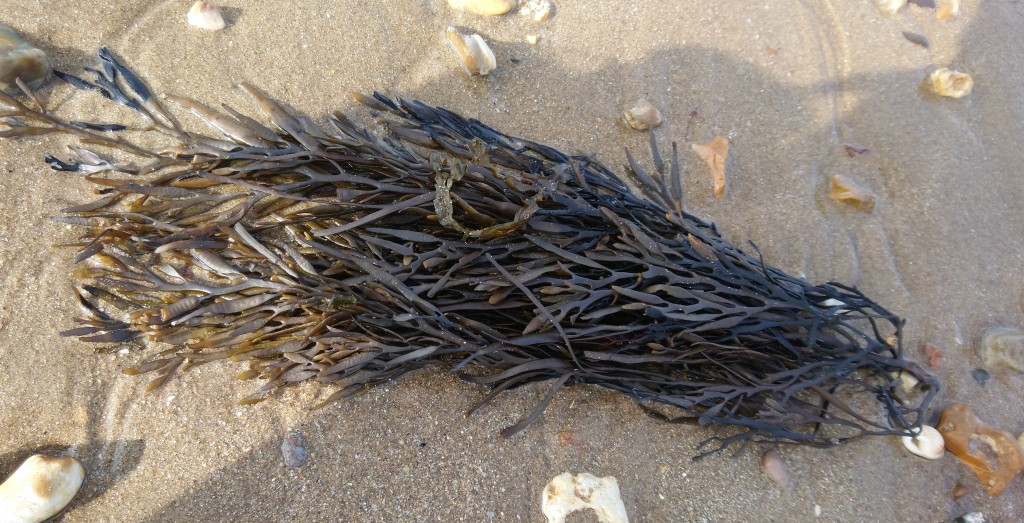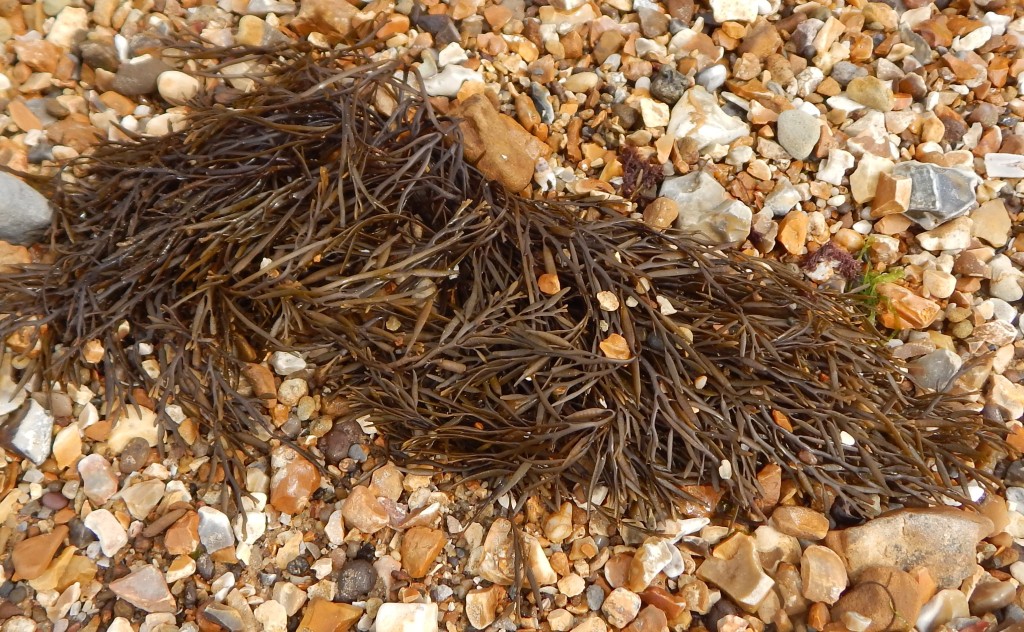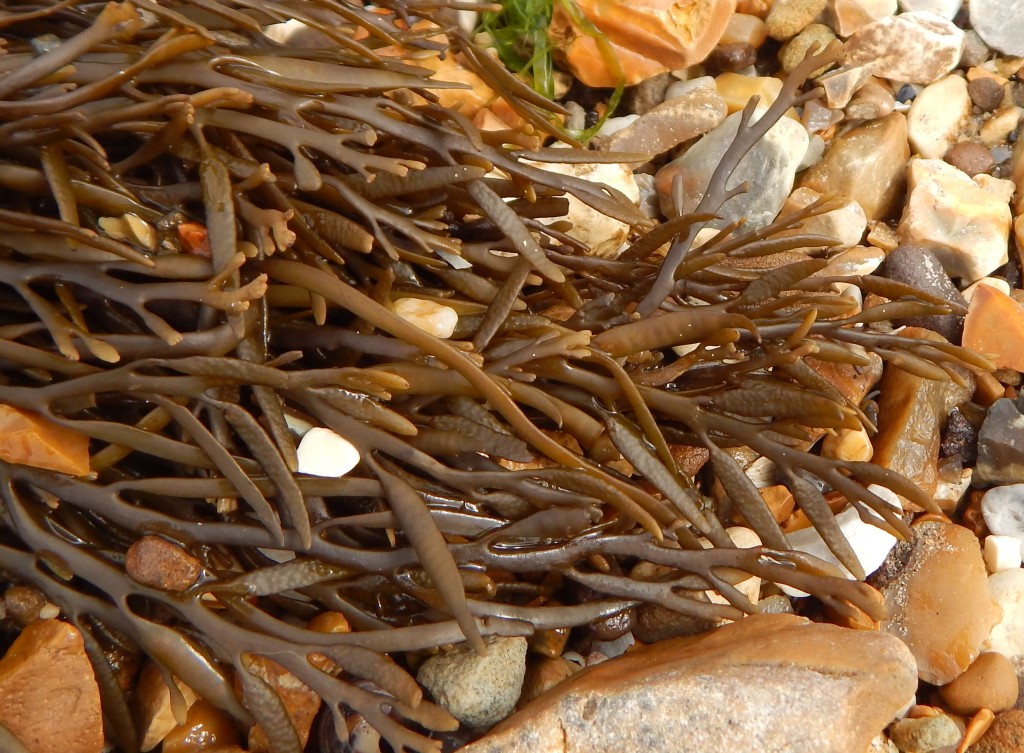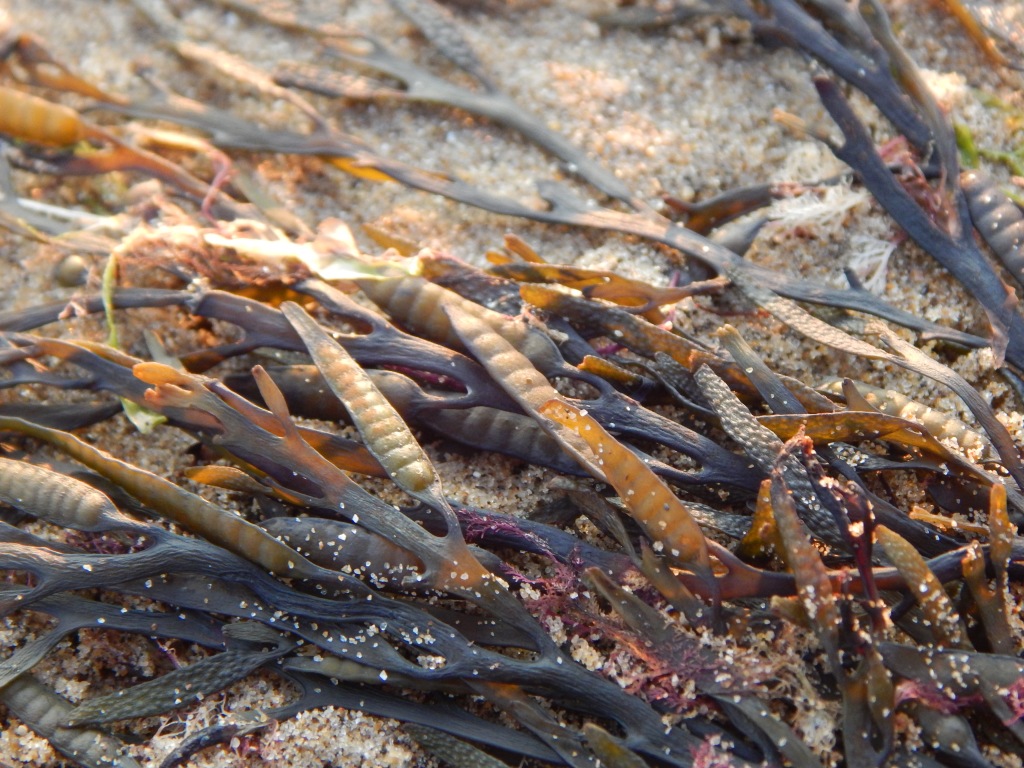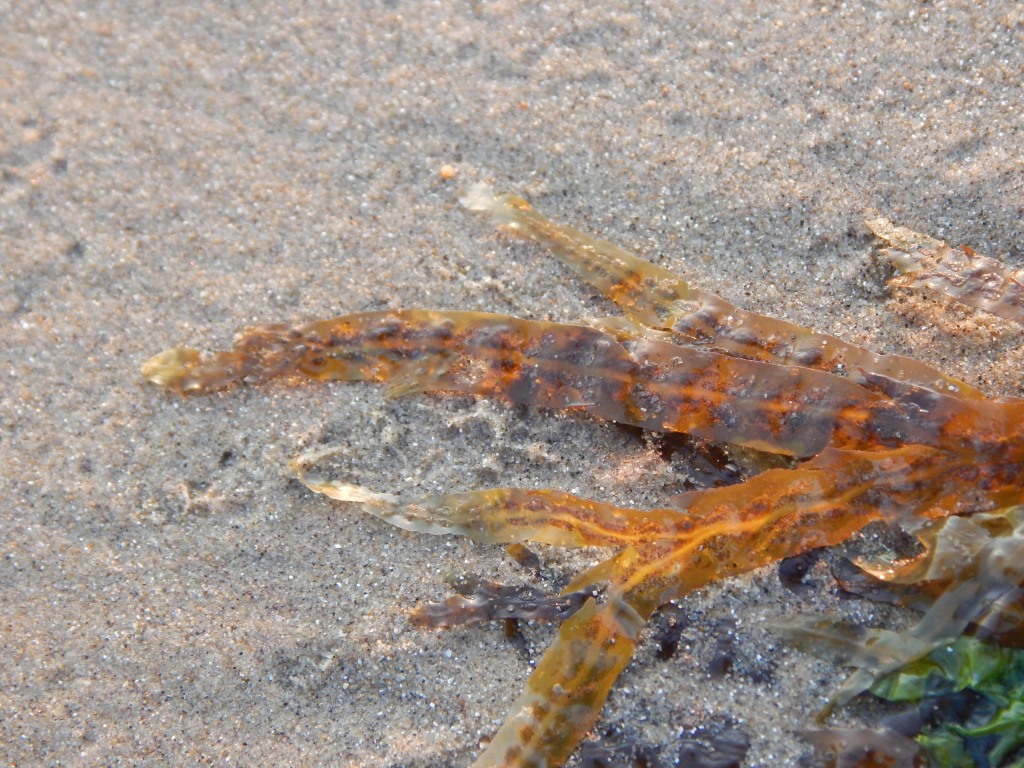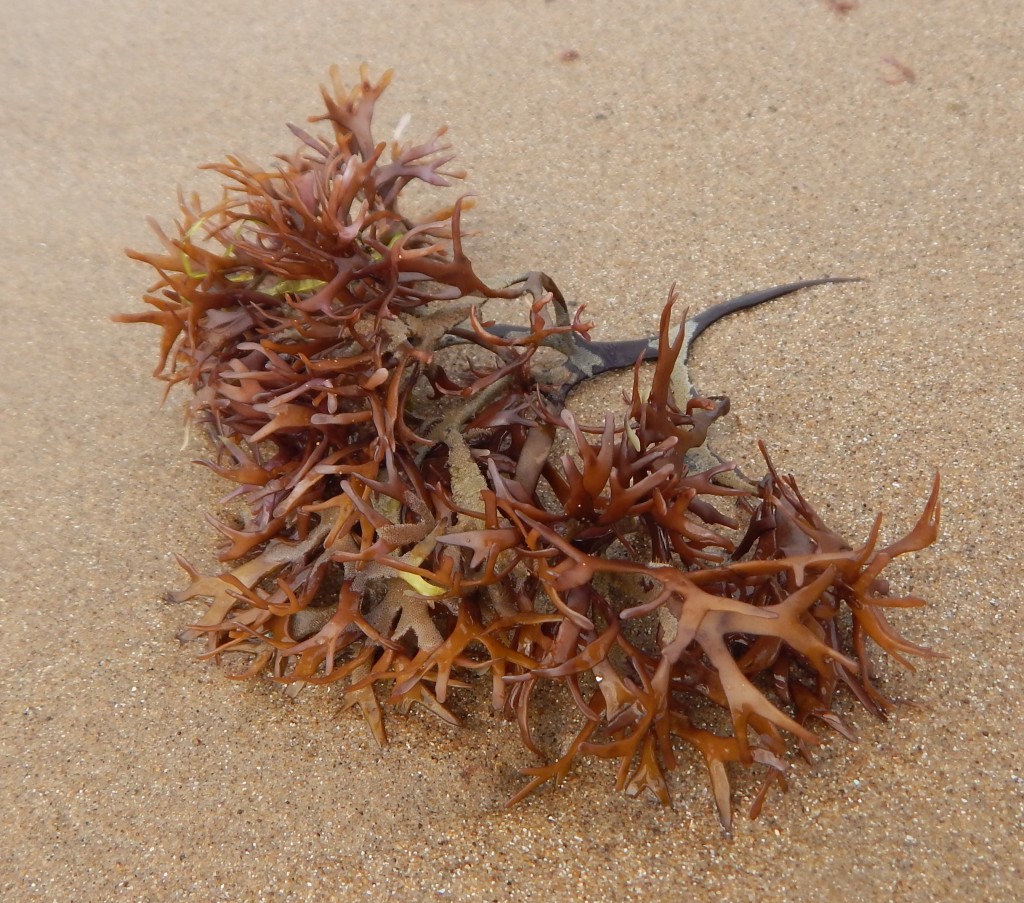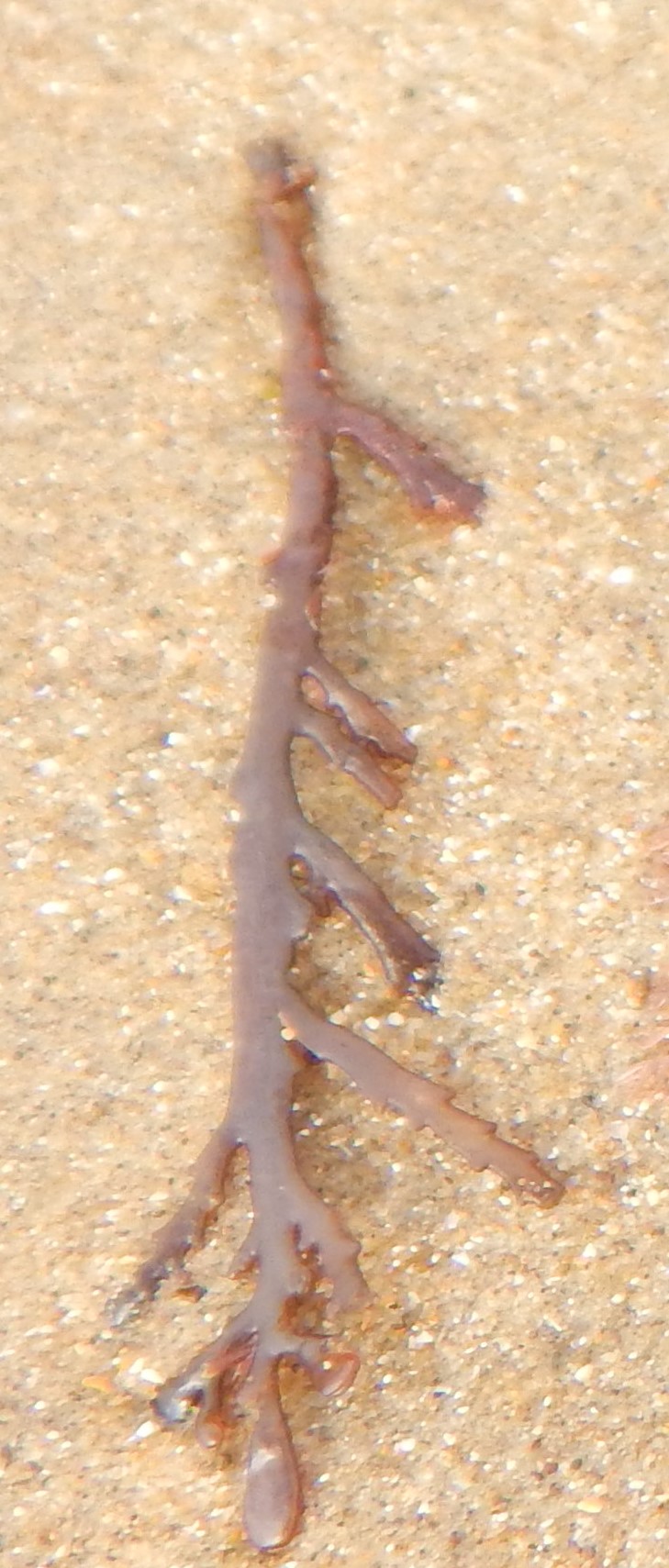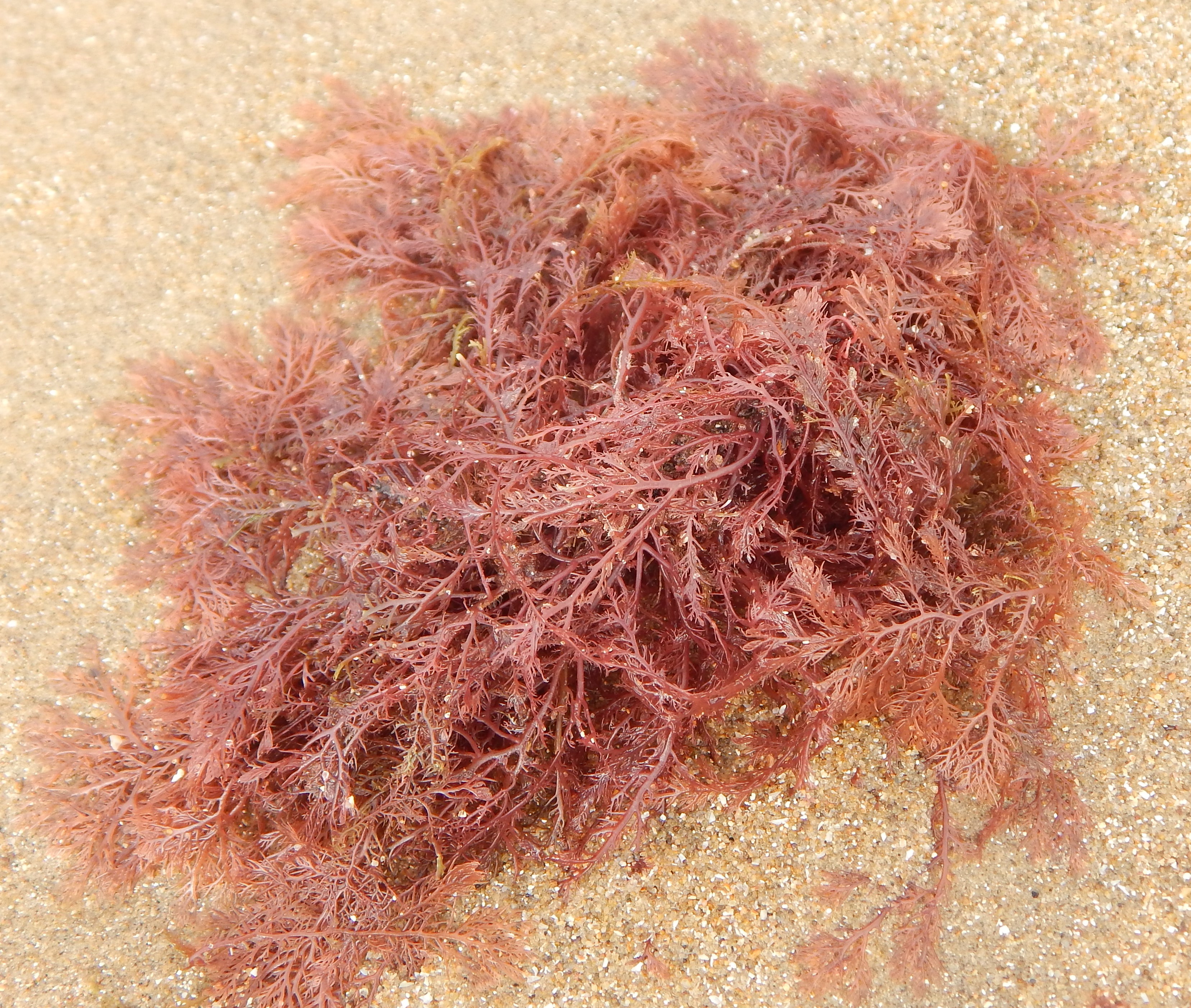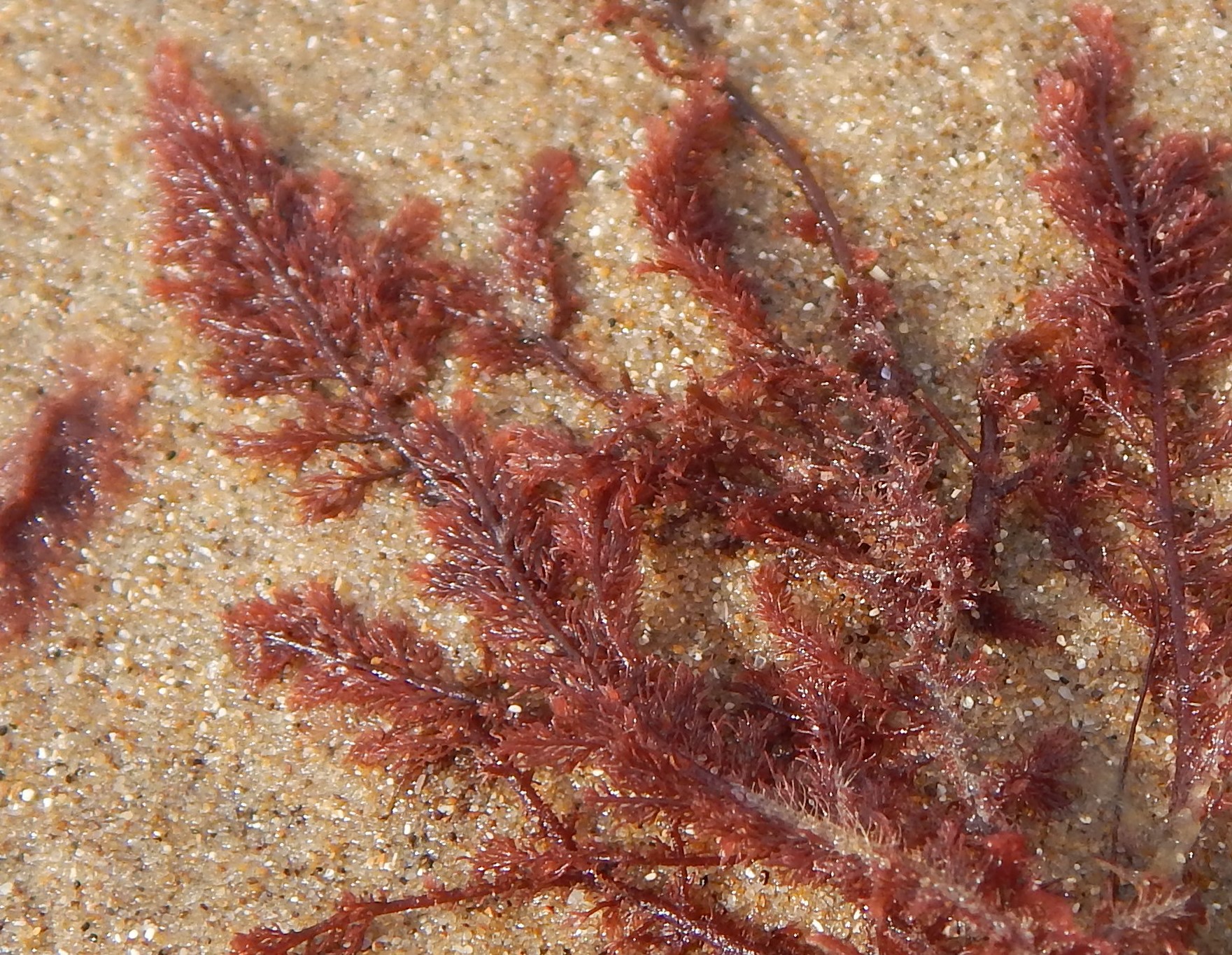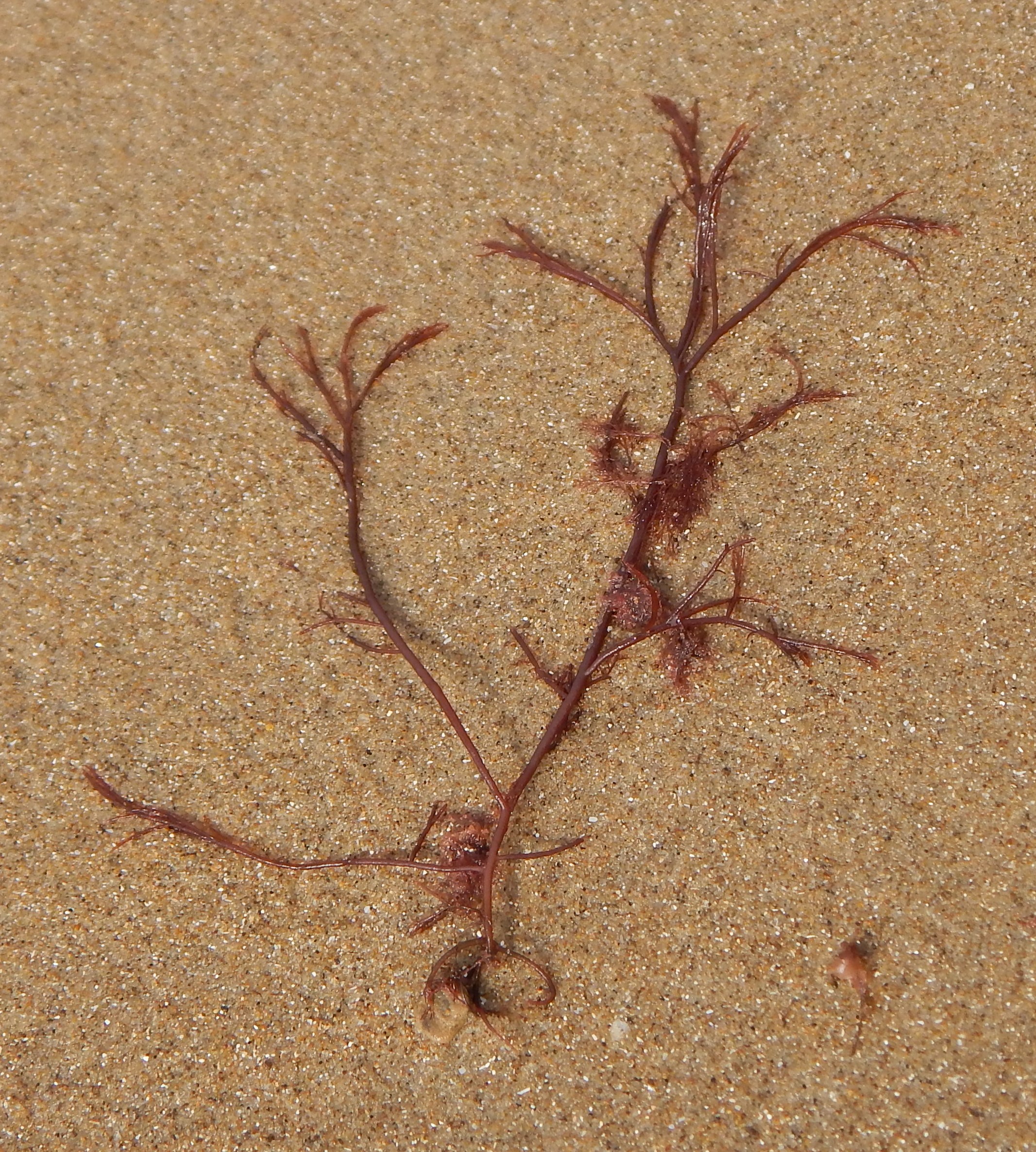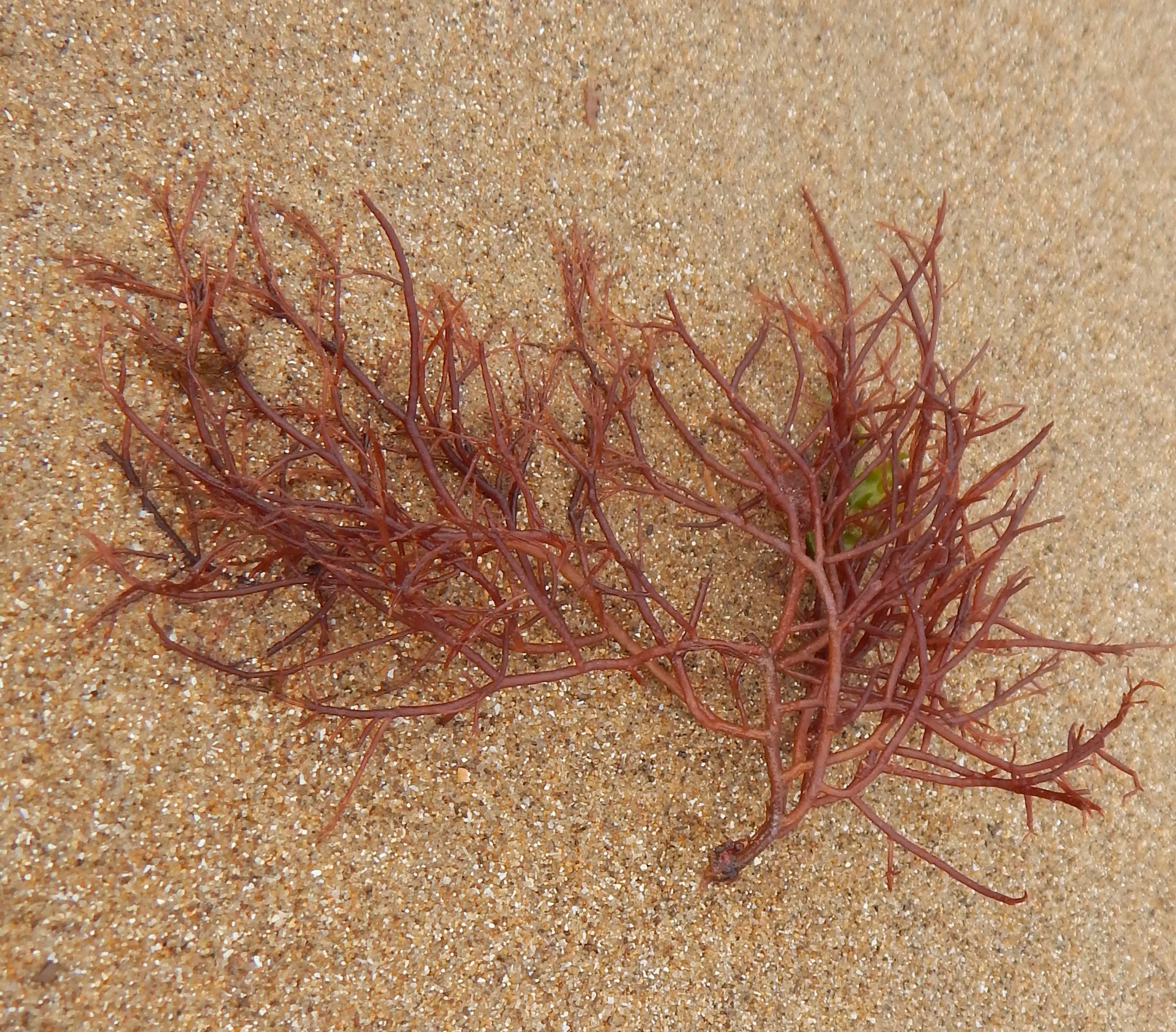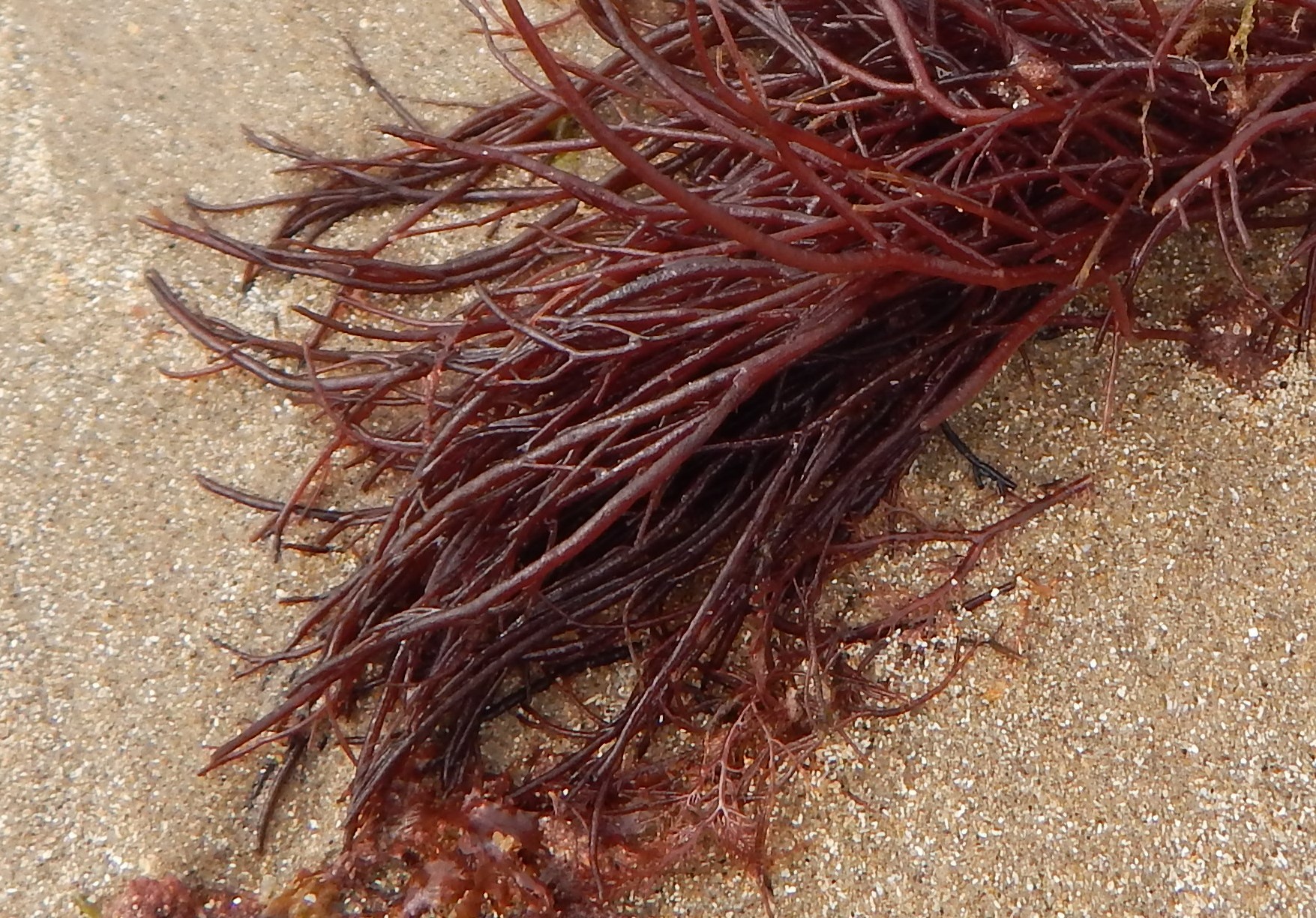
[352] Ulva intestinalis, Gutweed
Ulva lactuca, Sea Lettuce
Introduction
Ulva intestinalis, Gutweed, and Ulva lactuca, Sea Lettuce, are two types of common seaweed representing all the species of Green Algae.
All species of Ulva are sometimes called Sea Lettuce. Ulva intestinalis has been reclassified fairly recently. It used to be Enteromorpha intestinalis. [None of the other Ulva species have any specific common names.]
Sonchus arvensis, a close relative of [081] Chicory, has many common names that include Gutweed.
Taxonomy
Domain – Eukaryotes
Clade – Green Plants (Green Algae and Land Plants)
Phylum (or Division) – Chlorophyta
Class – Ulvophyceae
Order – Ulvales
Family – Ulvaceae (Flat or tubular green algae)
Genus – Ulva (Sea Lettuce)
Scientific Names – Ulva intestinalis, Ulva lactuca
Ulva intestinalis has the scientific synonym Enteromorpha intestinalis.
Groups above the Class level are debatable. They don’t usually have a level corresponding to Kingdom.
Name
The Classical Latin ulva is assumed to mean sedge (See [068] Hanging Sedge,) which is associated with water but is a long way from any green algae. Lactuca is the Modern Latin genus name for lettuce. Gutweed, intestinalis and Enteromorpha are all derived from the tubular nature of this plant.
Green Algae
What most people call seaweed consists of many species of Green Algae, Red Algae, Brown Algae and other types of Algae. I will not examine these in detail but, as you might expect by now, the actual colour of anything you see is only a very loose clue as to its classification.
We have already looked at [079] Red Algae and [151] Brown Algae and all I will add here is that Green Algae normally just creep to the widest definition of plants, where Red Algae or Brown Algae are normally just outside. Their green colour comes from the chlorophyll that defines plants.
The clade Chlorophytes (sometimes treated as a phylum or division) is one several groups that make up Green Algae.
The structures of Green Algae species are very simple. Many species, but not those in the order Ulvales, are single-celled.
As noted in [141] Oakmoss, many species of Lichen have Green Algae as their phycobiont.
Ulva lactuca
Sea Lettuce looks like a bright green, floppy flat leafy structure, somewhat like a lettuce leaf.
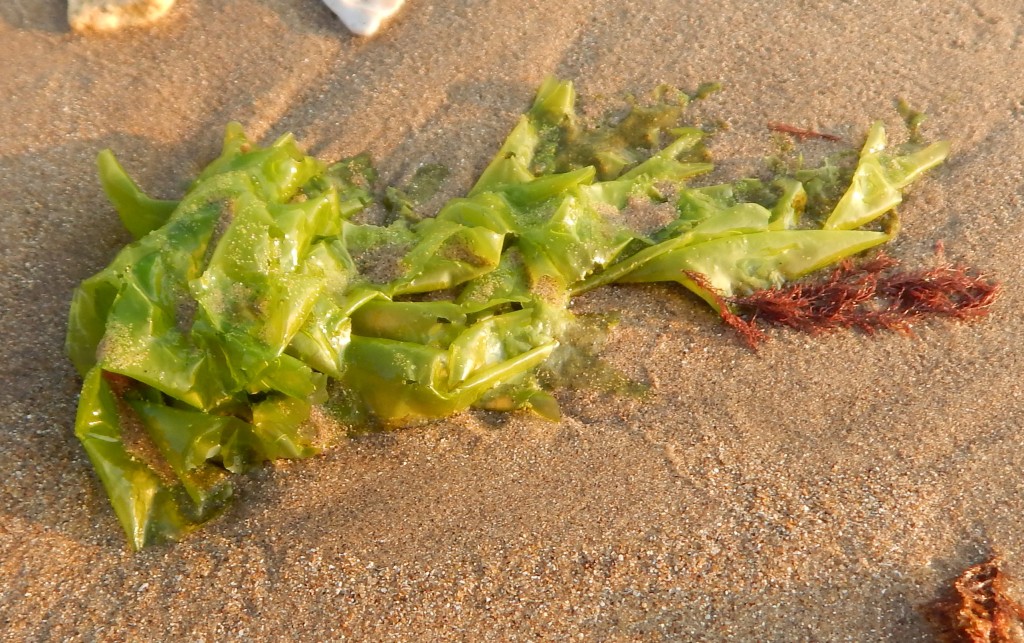
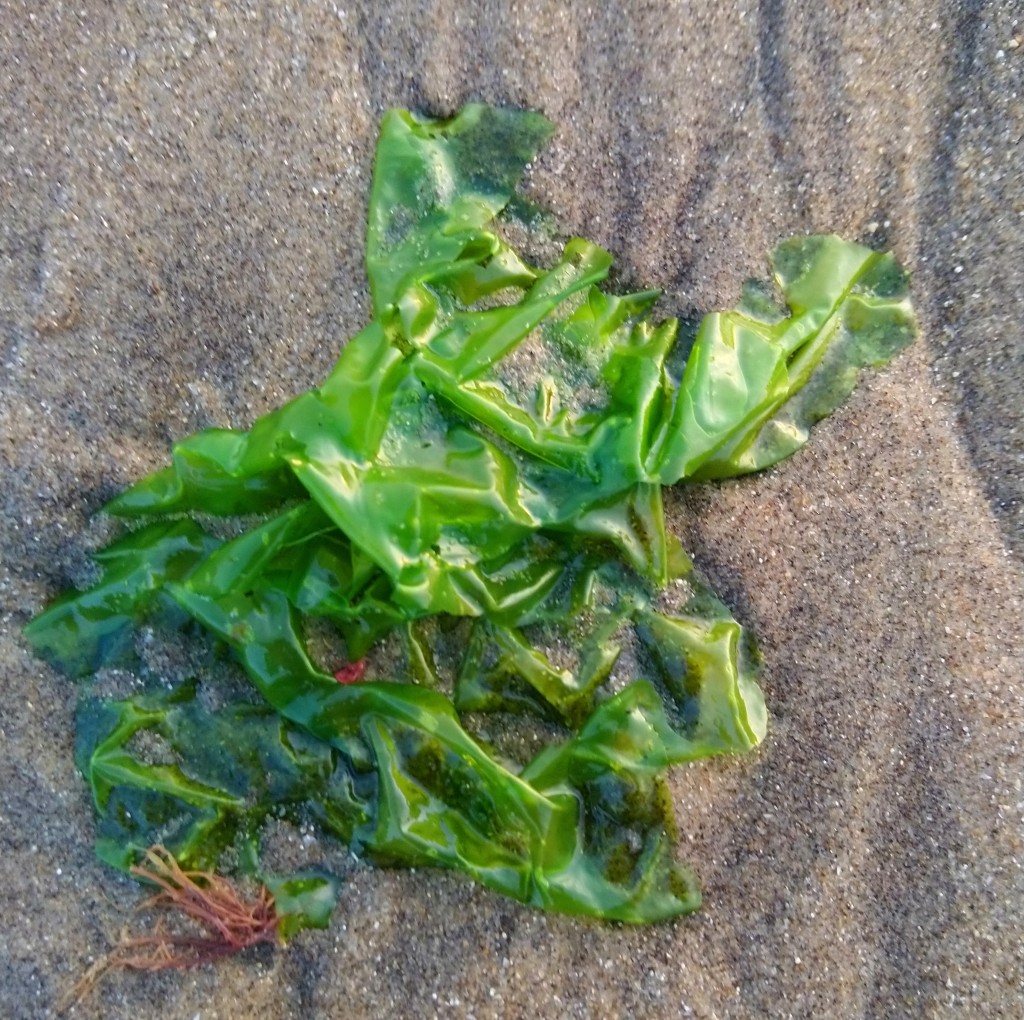
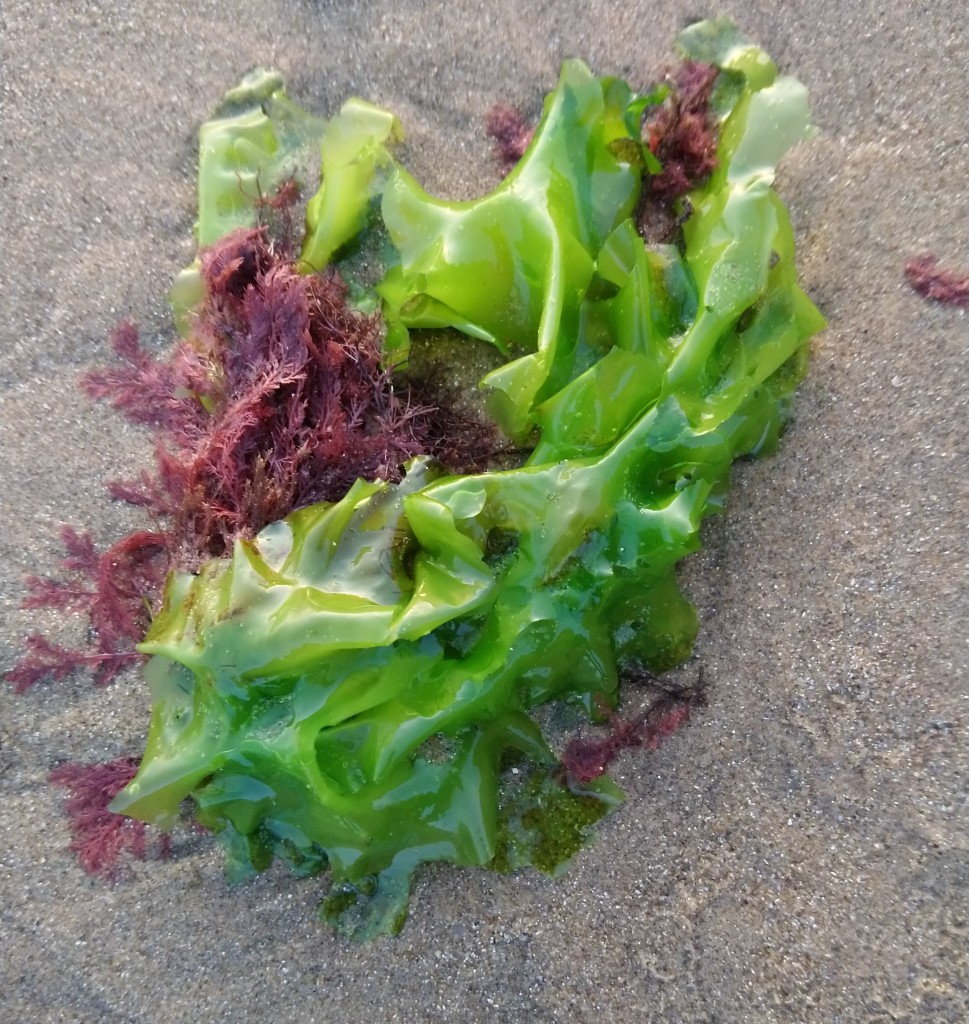
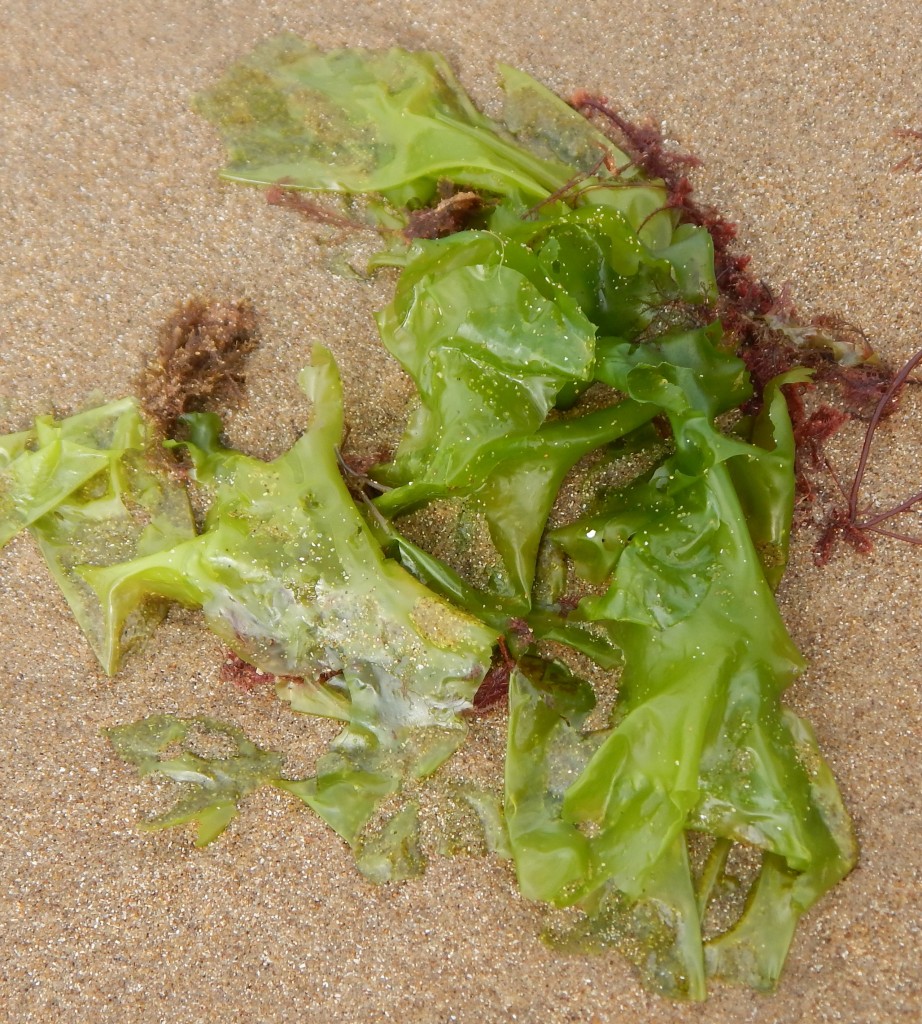
There are over a hundred species of Ulva, some of which may occur in Britain and some of these may look very similar to Ulva lactuca.
It has a worldwide distribution and is best found on sandy beaches or rocks between the high tide and low tide lines.

It is edible and has been used as a food source.
Ulva intestinalis
This species consists of long, very thin tubes of bright green, generally seen attached to rocks in tidal areas.
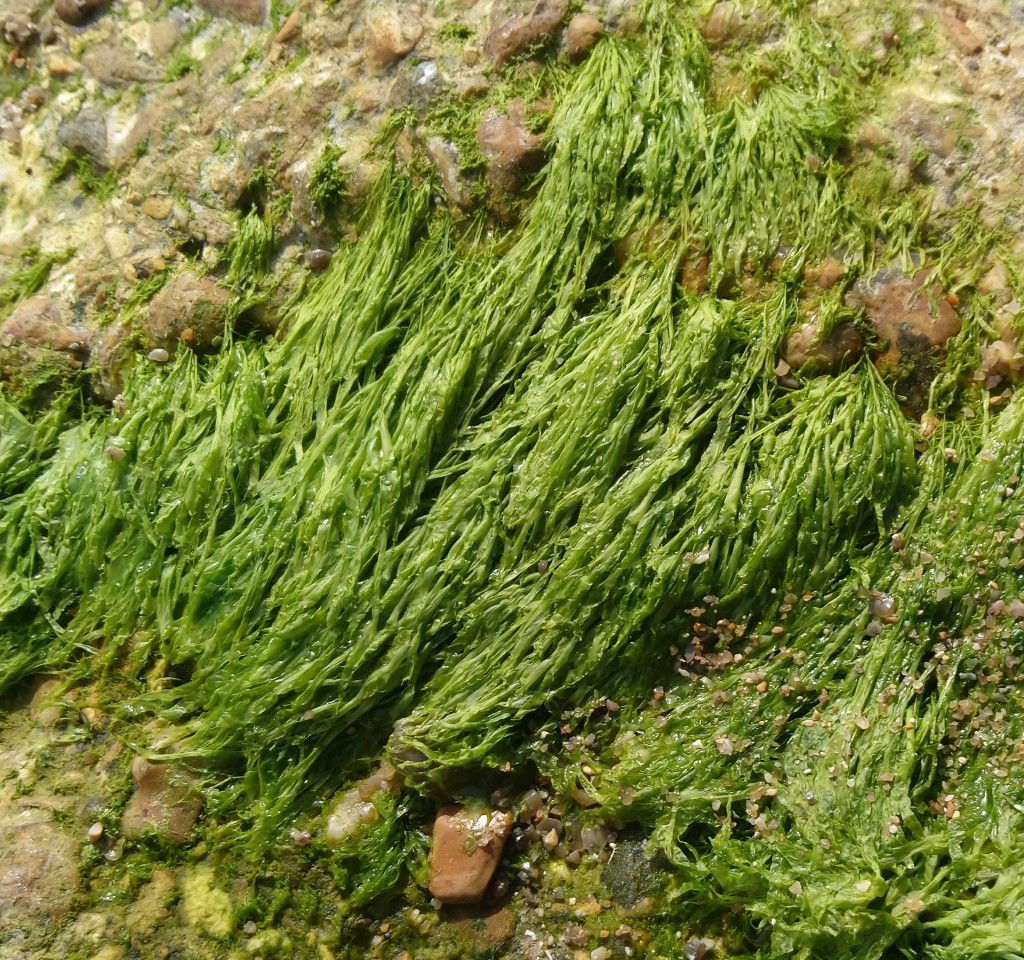
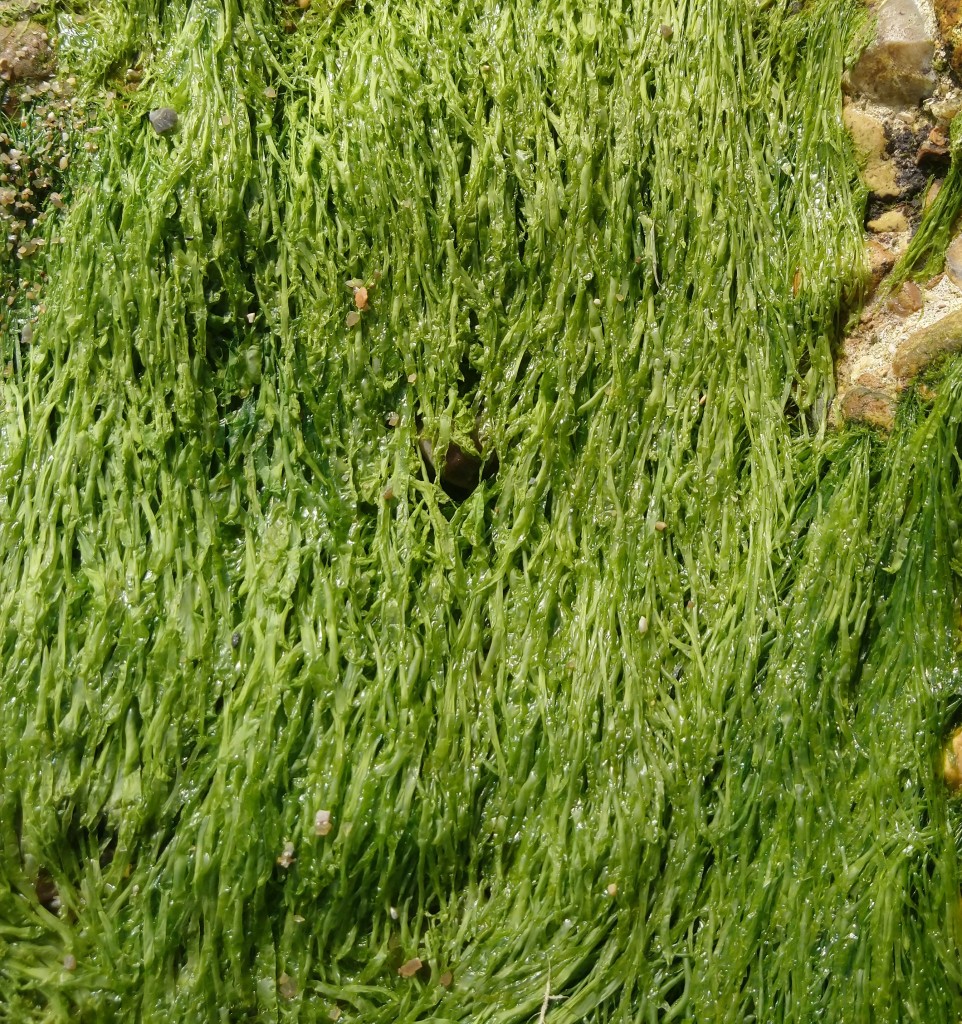
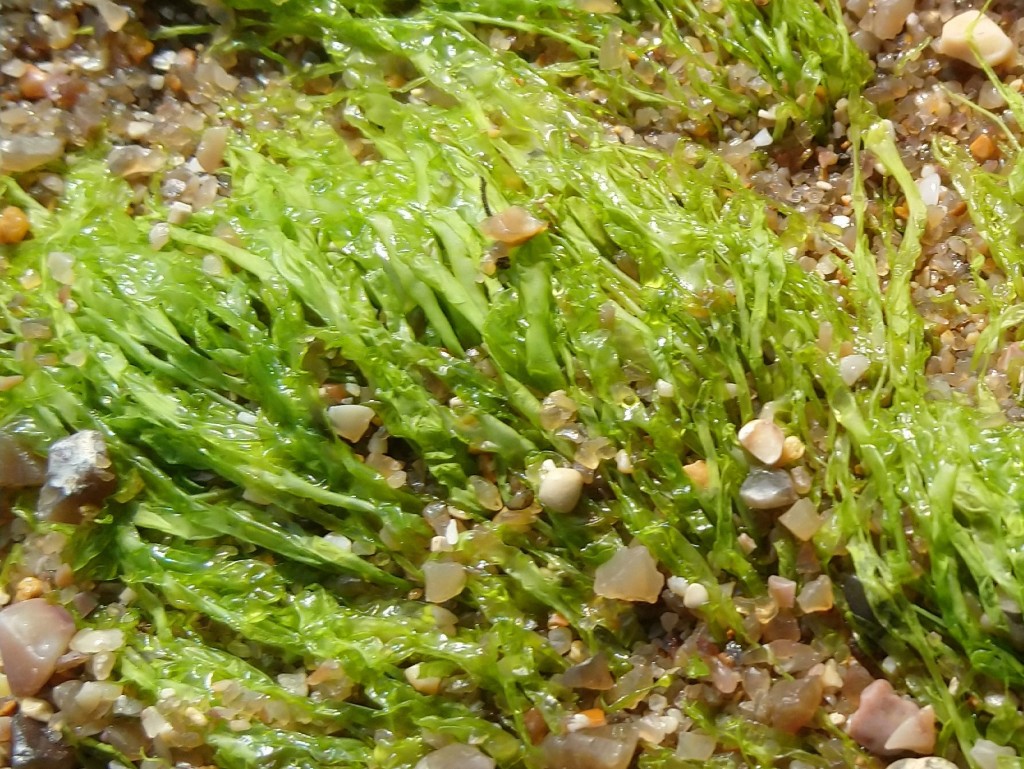
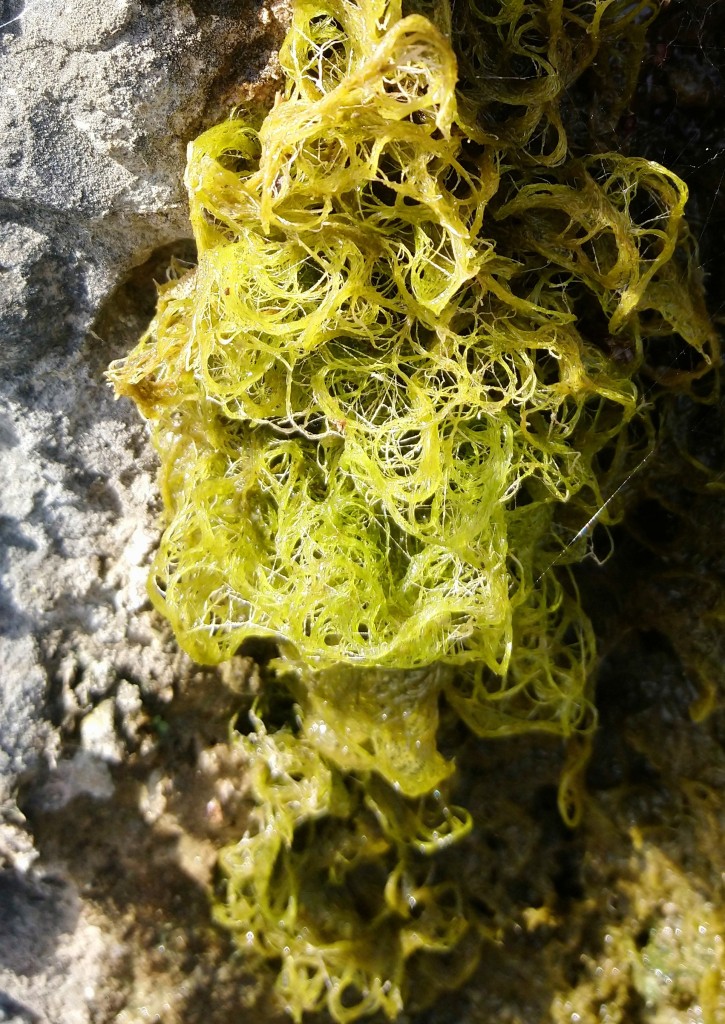
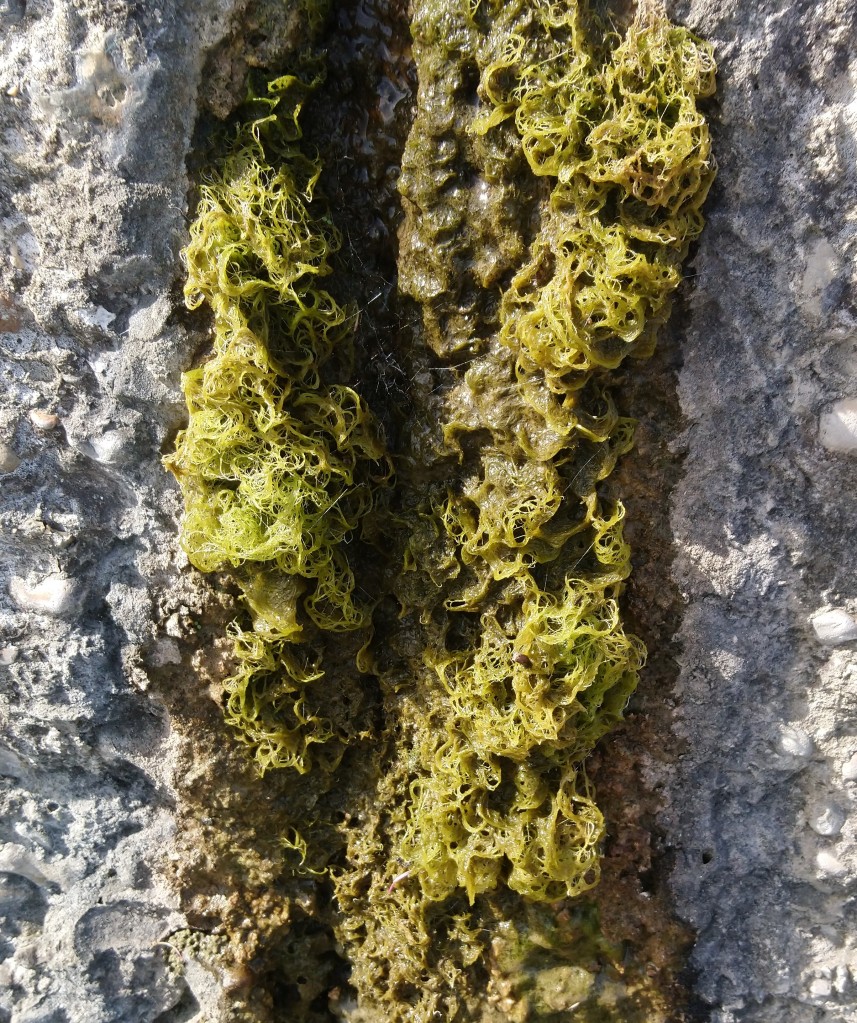
It is found almost worldwide.
Other Notes
Although I wanted to cover all Green Algae in this blog, there are no other common species – apart from some close relatives within the genus Ulva that may be confused with these two.

